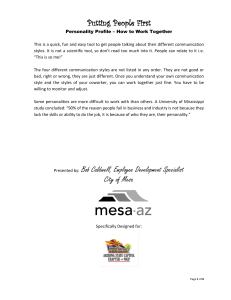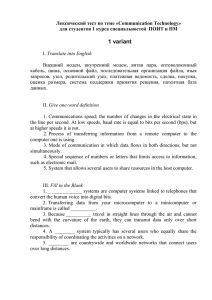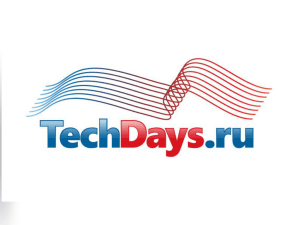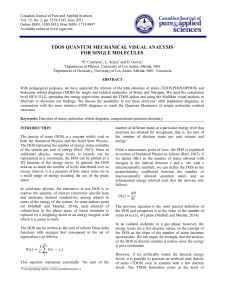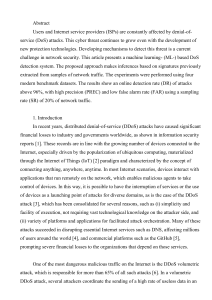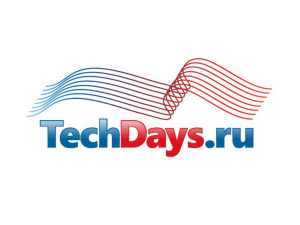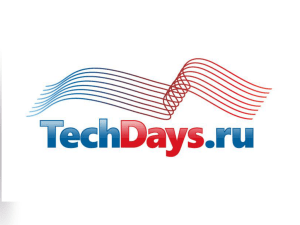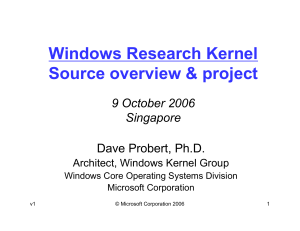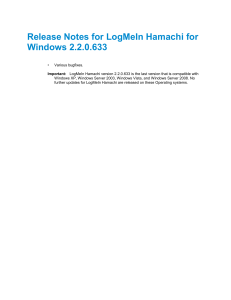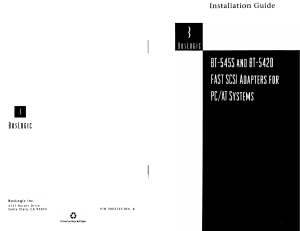Task 1. Read and translate the text: Operating systems
реклама
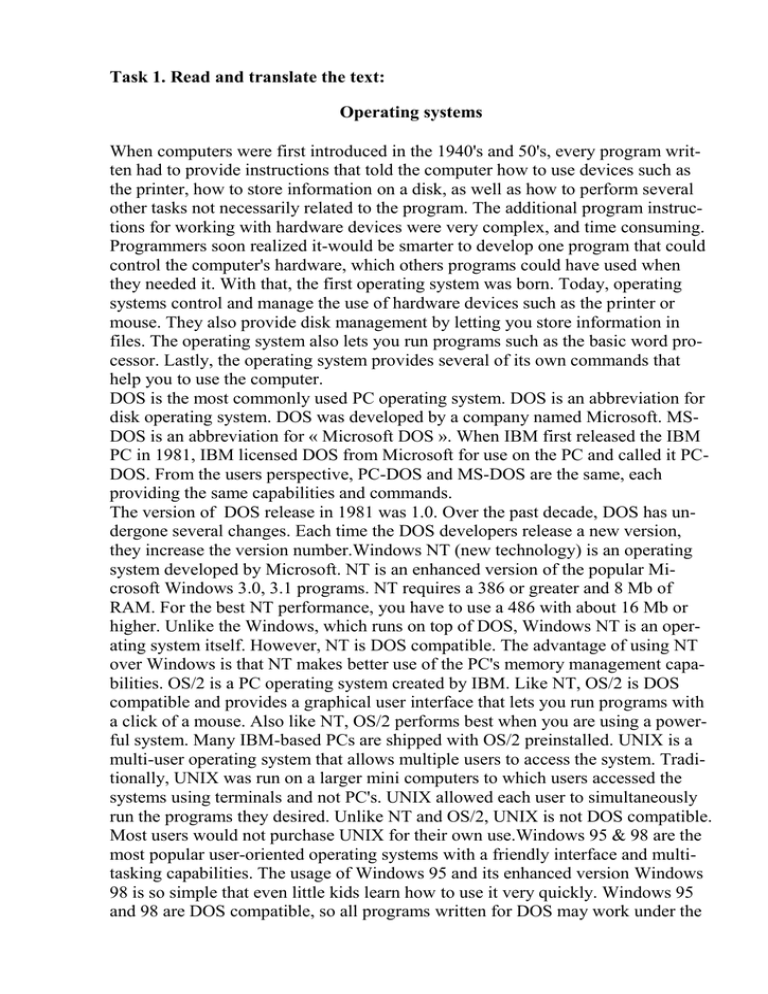
Task 1. Read and translate the text: Operating systems When computers were first introduced in the 1940's and 50's, every program written had to provide instructions that told the computer how to use devices such as the printer, how to store information on a disk, as well as how to perform several other tasks not necessarily related to the program. The additional program instructions for working with hardware devices were very complex, and time consuming. Programmers soon realized it-would be smarter to develop one program that could control the computer's hardware, which others programs could have used when they needed it. With that, the first operating system was born. Today, operating systems control and manage the use of hardware devices such as the printer or mouse. They also provide disk management by letting you store information in files. The operating system also lets you run programs such as the basic word processor. Lastly, the operating system provides several of its own commands that help you to use the computer. DOS is the most commonly used PC operating system. DOS is an abbreviation for disk operating system. DOS was developed by a company named Microsoft. MSDOS is an abbreviation for « Microsoft DOS ». When IBM first released the IBM PC in 1981, IBM licensed DOS from Microsoft for use on the PC and called it PCDOS. From the users perspective, PC-DOS and MS-DOS are the same, each providing the same capabilities and commands. The version of DOS release in 1981 was 1.0. Over the past decade, DOS has undergone several changes. Each time the DOS developers release a new version, they increase the version number.Windows NT (new technology) is an operating system developed by Microsoft. NT is an enhanced version of the popular Microsoft Windows 3.0, 3.1 programs. NT requires a 386 or greater and 8 Mb of RAM. For the best NT performance, you have to use a 486 with about 16 Mb or higher. Unlike the Windows, which runs on top of DOS, Windows NT is an operating system itself. However, NT is DOS compatible. The advantage of using NT over Windows is that NT makes better use of the PC's memory management capabilities. OS/2 is a PC operating system created by IBM. Like NT, OS/2 is DOS compatible and provides a graphical user interface that lets you run programs with a click of a mouse. Also like NT, OS/2 performs best when you are using a powerful system. Many IBM-based PCs are shipped with OS/2 preinstalled. UNIX is a multi-user operating system that allows multiple users to access the system. Traditionally, UNIX was run on a larger mini computers to which users accessed the systems using terminals and not PC's. UNIX allowed each user to simultaneously run the programs they desired. Unlike NT and OS/2, UNIX is not DOS compatible. Most users would not purchase UNIX for their own use.Windows 95 & 98 are the most popular user-oriented operating systems with a friendly interface and multitasking capabilities. The usage of Windows 95 and its enhanced version Windows 98 is so simple that even little kids learn how to use it very quickly. Windows 95 and 98 are DOS compatible, so all programs written for DOS may work under the new operating system. Windows 95 requires 486 with 16 megabytes of RAM or Pentium 75-90 with 40 megabytes of free hard disk space. Vocabulary: complex — сложный to consume — потреблять consumer — потребитель to realize — осознать smart — умный, умно decade — декада, десятилетие version — версия to enhance — расширять, увеличивать top — верх, вершина on top of DOS — «сверху», на основе ДОС compatible — совместимый with a click of a mouse — одним нажатием кнопки мыши access — доступ to allow — позволять multiple users — многочисленные пользователи simultaneously — одновременно to desire — желать to ship — поставлять, доставлять Task 2. Answer the following questions: 1) What problems faced programmers in the 1940's and 1950's? 2) Why first programs were «complex» and «time-consuming»? 3) What are the basic functions of operating system? 4) What does DOS abbreviation means? 5) What company developed the first version of DOS operating system? For what purpose? Was the new operational system successful? 6) What is the difference between the PC-DOS and MS-DOS? 7) What does the abbreviation NT stand for? Is it DOS-compatible? What are the basic requirements for NT? 8) Who is the developer of OS/2? 9) What makes UNIX so different from the other operational systems? 10 )What are the remarkable features of Windows 95? Task 3. Fill in the gaps using the words below: 1) Like NT,... is DOS compatible and provides a graphical user interface that lets you run programs with a click of a mouse. 2)... is the most commonly used PC operating system 3)... is a multi-user operating system that allows multiple users to access the system 4)... is an operating system developed by Microsoft, an enhanced version of the popular Microsoft Windows programs. 5) The usage of... is so simple that even little kids learn how to use it very quickly. a) UNIX b)DOS c)NT d) OS/2 e) Windows 95 Task 4. Decide whether the following statements are true or false in relation to the information in the text: 1) When computers were first introduced in 40s and 50's programmers had to write programs to instruct CD-ROMs, laser printers and scanners. 2) The operational system control and manage the use of the hardware and the memory usage. 3) There are no commands available in operating systems, only word processors. 4) Microsoft developed MS-DOS to compete with IBM's PC-DOS. 5) NT requires computers with 486 CPU and 16 M random access memory. 6) OS/2 is DOS compatible because it was developed by Microsoft. 7) Traditionally, UNIX was run by many users-simultaneously 8) Windows 95 and Windows 98 are DOS compatible and have very «friendly» and convenient interface. Task 5. Find the equivalents in the text: 1) Современные операционные системы контролируют использование системного оборудования, например, принтера и мыши. 2) С точки зрения пользователя, операционные системы PC-DOS и MS-DOS идентичны, с равными возможностями и набором системных команд. 3) OS/2 — DOS совместимая операционная система, позволяющая запускать программы при помощи графического интерфейса пользователя. 4) Дополнительные программы для работы с устройствами системного оборудования были очень сложны и поглощали много времени. 5) Операционная система также позволяет запускать программы, такие как простейший текстовый редактор. 6) DOS — наиболее распространенная операционная система для персонального компьютера.
